 W
WCarlos Baliño (1848-1926) was a Cuban writer born in Guanajay, Cuba.
 W
WAlberto Bayo y Giroud was a Cuban military leader of the defeated left-wing Loyalists in the Spanish Civil War. He was also a poet and essayist.
 W
WEmilio Bobadilla was a Cuban writer, poet, literary critic and journalist. He also wrote under the pseudonym "Fray Candil".
 W
WPedro Luis Boitel was a Cuban poet and dissident who opposed the governments of both Fulgencio Batista and Fidel Castro. In 1961, the regime sentenced him to 10 years in prison.
 W
WMariano Brull Caballero was a Cuban poet usually associated with the French Symbolist movement. Two Symbolists who strongly influenced him were Stéphane Mallarmé and Paul Valéry. Among Cuban poets of the first half of the 20th century he was the most outstanding of those who wrote poetry for poetry's sake, as opposed to poetry that addressed social issues or poetry that was inspired by the culture of Cubans of African descent. Because of his interest in the sounds of words, he is known for a type of poetry called "jitanjáfora" in which the words are virtually meaningless, their sounds all-important. A diplomat by profession, he lived many years in various countries of Europe and the Americas.
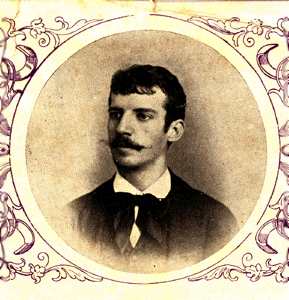 W
WJosé Julián Herculano del Casal y de la Lastra was a poet from Havana, Cuba. He started his writing career at a young age and later in life was known as an important forebearer of modernistic expression in Latin America.
 W
WPedro Felipe Figueredo, mostly known as Perucho was a Cuban poet, musician, and freedom fighter of the 19th century. In the 1860s, he was active in the planning of the Cuban uprising against the Spanish known as the Ten Years' War.
 W
WCarlos Franqui was a Cuban writer, poet, journalist, art critic, and political activist. After the Fulgencio Batista coup in 1952, he became involved with the 26th of July Movement which was headed by Fidel Castro. Upon the success of the Cuban Revolution in 1959, he was placed in charge of the rebellion's newspaper Revolución, which became an official government publication. When he came to have political differences with the regime, he left Cuba with his family. In 1968 he broke with the Cuban government when he signed a letter condemning the Soviet invasion of Czechoslovakia. He became a vocal critic of the Castro government, writing frequently until his death on April 16, 2010.
 W
WJorge Enrique González Pacheco is an international award-winning Cuban poet, film industry professional, and cultural entrepreneur. He has a Bachelor's Degree in Latin American Literature from University of Havana, Cuba, and a Master's Degree in Hispanic Literature from Complutense University of Madrid, Spain.
 W
WNicolás Cristóbal Guillén Batista was a Cuban poet, journalist, political activist, and writer. He is best remembered as the national poet of Cuba.
 W
WJosé María Heredia y Heredia, also known as José María Heredia y Campuzano was a Cuban-born poet considered by many to be the first romantic poet of the Americas and the initiator of Latin American romanticism. More recently, this view has been qualified, highlighting Heredia's roots in Neoclassicism and the aesthetics of eighteenth-century Sensibility. He is known as "El Cantor del Niagara" and regarded as one of the most important poets in the Spanish language. He has also been named National Poet of Cuba.
 W
WFayad Jamís (1930–1988) was a Cuban poet, painter, designer, journalist and translator. He was born in Zacatecas, Mexico to a Lebanese-Cuban father and a Mexican mother. Moving to Cuba at the age of six, Jamis trained at the San Alexandro Academy before gaining renown as an abstract painter. He was a member of the modernist group of Cuban painters known as "Las Once".
 W
WJosé Lezama Lima was a Cuban writer and poet who is considered one of the most influential figures in Latin American literature.
 W
WJosé Julián Martí Pérez was a Cuban poet, philosopher, essayist, journalist, translator, professor, and publisher, who is considered a Cuban national hero because of his role in the liberation of his country, and he was an important figure in Latin American literature. He was very politically active, and is considered an important revolutionary philosopher and political theorist. Through his writings and political activity, he became a symbol of Cuba's bid for independence from the Spanish Empire in the 19th century, and is referred to as the "Apostle of Cuban Independence." From adolescence, he dedicated his life to the promotion of liberty, political independence for Cuba, and intellectual independence for all Spanish Americans; his death was used as a cry for Cuban independence from Spain by both the Cuban revolutionaries and those Cubans previously reluctant to start a revolt.
 W
WJosé Jacinto Milanés y Fuentes, a self-educated and from humble origins, was a renowned poet, linguist and writer who has been acclaimed as one of the best exponents of Cuban literature with the publication of his magnum opus El Conde Alarcos (1838). Milanés is also considered the best playwright of Cuba. Some of his other works include El poeta en la Corte, Por el puente o por el río, and A buena hambre no hay pan duro.
Dolan Mor is a Cuban writer. In most of his works, he plays with fictional art of poetry, with false authorships, change of identities, or the use of diverse heteronyms. To elaborate such postmodern art of poetry, he combines different literary styles in his books. He also adds pictures of writers, or photocopies of apocryphal manuscripts and non-existent bibliographies. He was pupil of Joseba Sarrionandia, a mysterious writer and linguist of The Basque Country. Mor lives in Aragon, Spain since 1999.
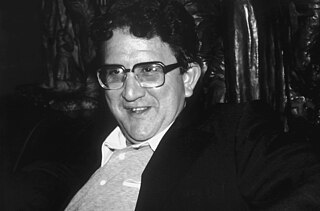 W
WHeberto Juan Padilla was a Cuban poet, and the center of the so-called "Padilla affair" when he was imprisoned for criticizing the government. He was born in Puerta de Golpe, Pinar del Río, Cuba. His first book of poetry, Las rosas audaces, was published in 1949. After his first marriage to Bertha Hernandez with whom he had three children, Giselle, Maria and Carlos Padilla, he married poet Belkis Cuza Malé in 1972. His son, Ernesto Padilla, was born in 1972.
 W
WJose Joaquin Palma was the author of the Guatemalan national anthem's lyrics.
 W
WRaúl Rivero Castañeda is a Cuban poet, journalist, and dissident. Rivero was born in 1945 in Morón, Camagüey, in central Cuba.
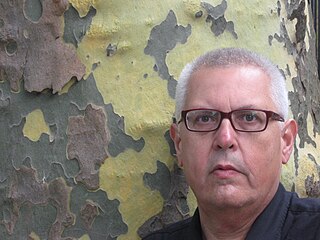 W
WVíctor Rodríguez Núñez is a Cuban poet, journalist, literary critic and translator.
 W
WAntonio Rodríguez Salvador, is a poet, fiction writer, dramatist and essayist.
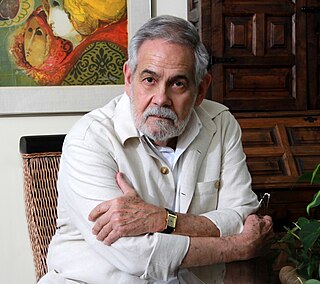 W
WOrlando Rossardi is a Cuban American poet, playwright and a researcher in Latin American literature.
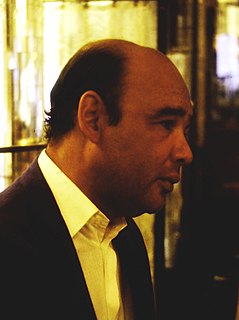 W
WSevero Sarduy was a Cuban poet, author, playwright, and critic of Cuban literature and art. Some of his works deal explicitly with male homosexuality and transvestism.
 W
WMiguel Teurbe Tolón y de la Guardia was a Cuban playwright, poet, and the creator of the Coat of arms of Cuba and the Flag of Cuba.
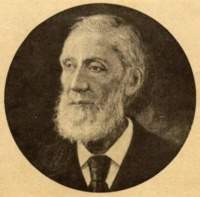 W
WCirilo Villaverde de la Paz was a Cuban poet, novelist, journalist and freedom fighter. He is best known for Cecilia Valdés, a novel about classes and races in colonial Cuba.
 W
WJuan Clemente Zenea was a Cuban writer born in Bayamo, Granma, on February 24, 1832. He is recognised as having been a great influence on Cuban literature for reintroducing Romanticism, marking a new age in Hispano-American poetry.